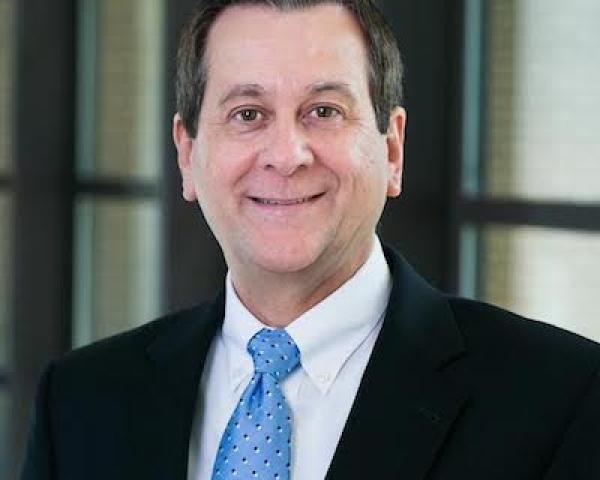Automation is transforming claims processing in myriad ways. Damage appraisals that are completed in only a few hours are becoming the norm―shaving days off cycle time and making the claims process easier than ever before. Insurance customers are getting comfortable with snapping a few photos of their damaged vehicle and sending them to their insurer via a simple mobile claim app. Drones are often dispatched to inspect storm damage on a home, allowing property adjusters to complete virtual damage inspections. Data delivered electronically early in the claims process is revolutionizing the claims workflow, simplifying claim reporting and providing a wealth of actionable data to expedite claim settlements.
What do customers think about the advent of claims automation? How can insurers leverage today’s technology and real time data to wow their customers? These are just a sample of the questions we wanted to answer with our Future of Claims panel of experts at the LexisNexis Customer Advisory Meeting on Sept. 11, 2018, in Scottsdale, AZ. This session, which I moderated, included experts Dave Pieffer (P&C practice lead with J. D. Power & Associates), Jimmy Spears (AVP auto experience with USAA) and Lily Wray (VP emerging technology operationalization with Liberty Mutual).
See also: 3 Techs to Personalize Claims Processing
Data from the 2018 J. D. Power Claims Customer Service Survey, presented by Dave Pieffer, informed our discussion around the following four themes (with the customer perspective for the themes shown in quotes):
- Show Empathy―“Listen to Me”
- Streamline Customer Communications―“Simplify for Me”
- Improve Service Speed―“Prioritize Me”
- Optimize and Balance Self-Service Options―“Empower Me”
Show Empathy
The survey found that showing empathy (“Listen to Me”) ―expressed as “ensuring the customer feels more at ease”―scores low, with an industry average of 66%. Pieffer shared that the only empathy category scoring lower was “taking the loss report in 15 minutes or less”―with an average of 59%. The panel explained the importance of listening to customers as a first priority and improving FNOL scripts to be more natural and conversational versus impersonal (such as simply providing a list of questions). Jimmy Spears emphasized the importance of adopting a user-friendly self-service claims reporting process. He introduced the term “digital hug”―an immediate digital response to a customer’s electronic claim report or message. Spears shared that often customers who report electronically will immediately also call to ask, “Did you get my report?” Providing a digital hug gives customers the assurance that they have been heard and action is underway. The panel audience participated in the session by answering real time electronic polling questions from their phones, and in this case responded that simplifying the FNOL process with fewer questions was the most important way to increase customer empathy.
Streamline Customer Communications
On the topic of streamlining customer communications (“Simplify for Me”), Spears explained that “pro-active communication is the key to success.” Pieffer shared statistics showing that customers are most satisfied when the insurer updates them with claim status information. The survey results supported this information through scores indicating deteriorating satisfaction when customers find themselves having to call their insurer or repair facility. The panel agreed that getting the claim to the right person quickly and avoiding multiple handoffs was critical to improving customer communications. This was confirmed by survey data that showed consumer ratings drop by 133 points when customers are asked to repeat information during the claims process. The audience’s real-time polling indicated that typically at least three claims employees touch even the simplest claims.
Improve Service Speed
Customers expect their insurance company to make them a priority (“Prioritize Me”) when they have a claim. While we often think this means fast claims service, Pieffer explained that the survey results indicated that setting an accurate customer expectation at loss report was equally important to processing speed. In fact, meeting customer expectations on time-to-settle increases customer satisfaction scores even more than simply providing a fast claim experience. Spears explained how his company has completely redesigned the total loss claims experience by simplifying not only claims processing but also the car purchasing process via USAA Bank services and the USAA car buying service, which allows customers to be in their next car within a few days versus a few weeks (the industry average). Audience polling revealed that the optimal time to pay a simple claim should be within three days. Pieffer noted that the survey indicated today’s industry average is about six days.
Optimize and Balance Self-Service Options
Our final discussion topic (“Empower Me”) focused on the use of self-service technology. Pieffer shared data showing that Gen X and Gen Y customers (younger than age 50) were most comfortable with submitting damage photos via a mobile app and receiving electronic claims updates. While this was not a surprise, it was interesting to learn that satisfaction with digital FNOL was low for all age groups. The panel spoke about the need to simplify the FNOL process to minimize the clicks it takes to complete a digital FNOL. This was validated by audience polling, which overwhelmingly supported simplifying FNOL apps and minimizing clicks. I shared the value of bringing real-time data into FNOL and self-service applications to electronically verify first-party information to minimize additional inquiry. Furthermore, I noted that real-time FNOL data also allows third-party information to be collected immediately and accurately to simplify the FNOL process and make self-service reporting much easier for customers, which should greatly increase customer adoption.
See also: The Missing Piece for Customer Experience
The panel discussion and audience poll answers confirm that delighting customers at time of claim is all about listening to, simplifying for, prioritizing and empowering them. As the P&C insurance industry continues to advance in claims automation, these four customer expectations should be front and center to ensure greater customer satisfaction and retention.








